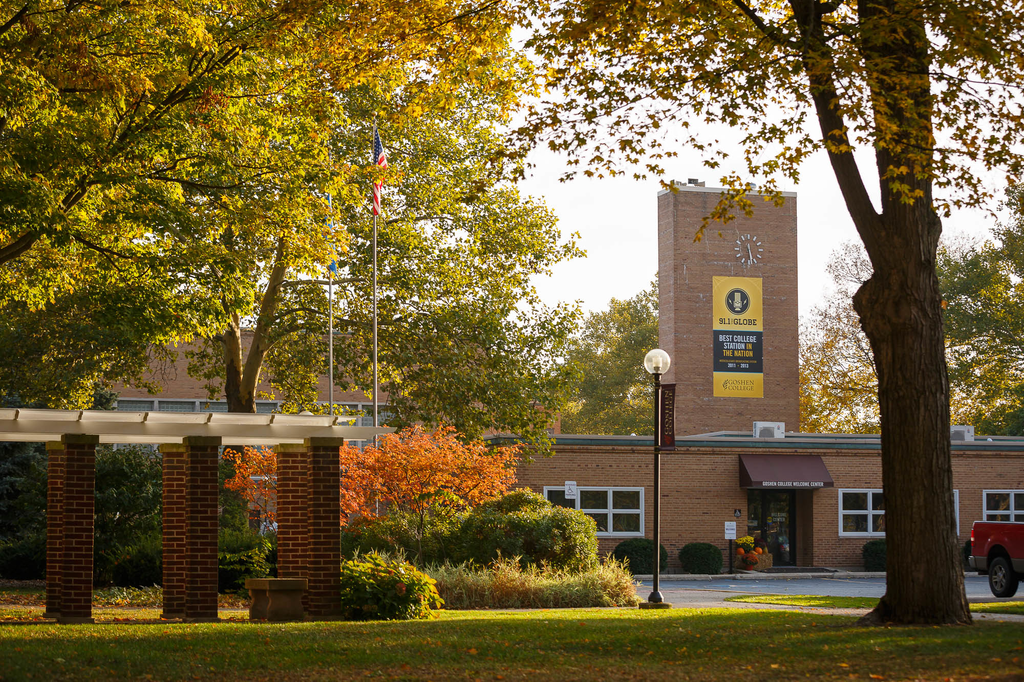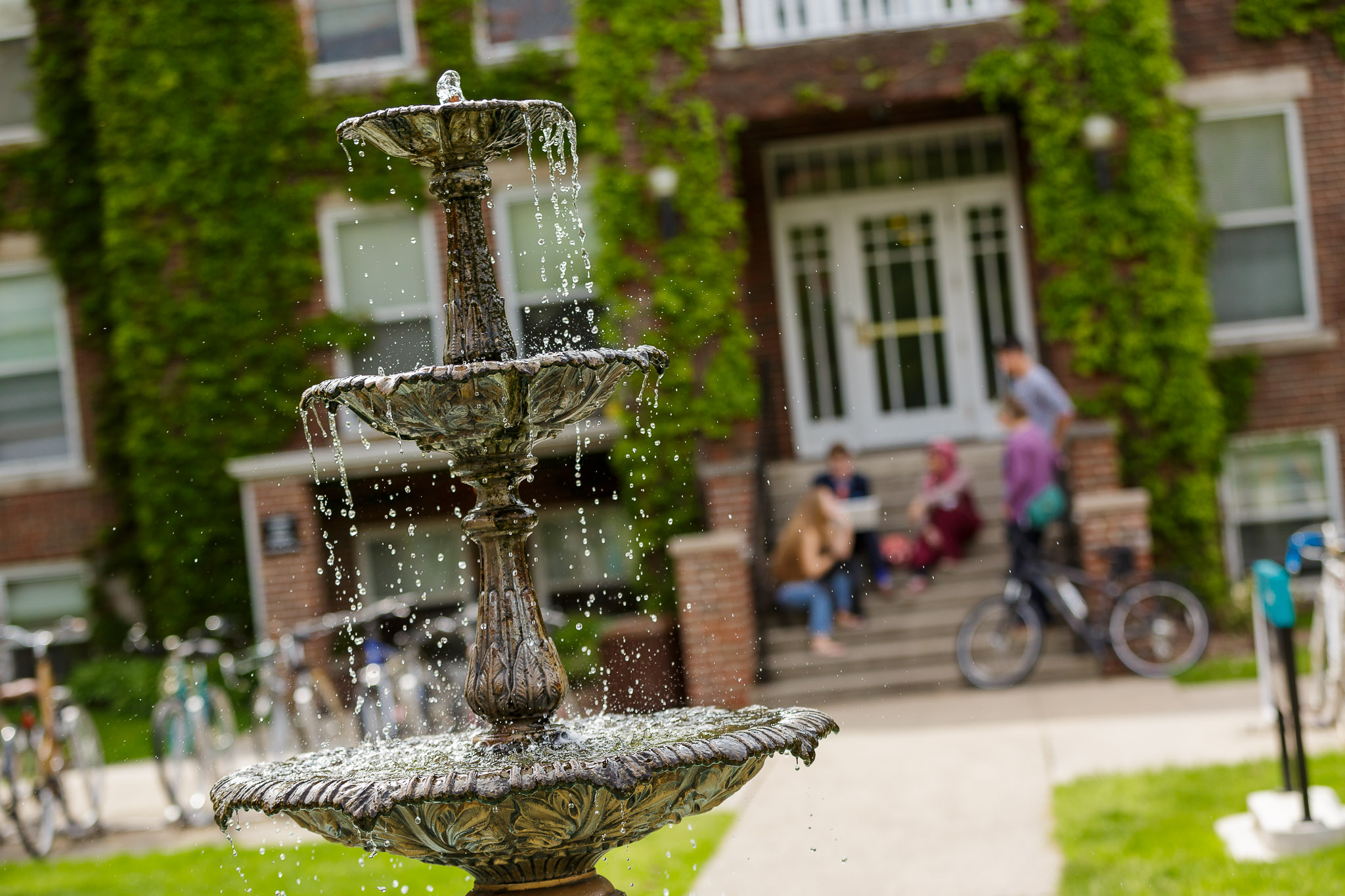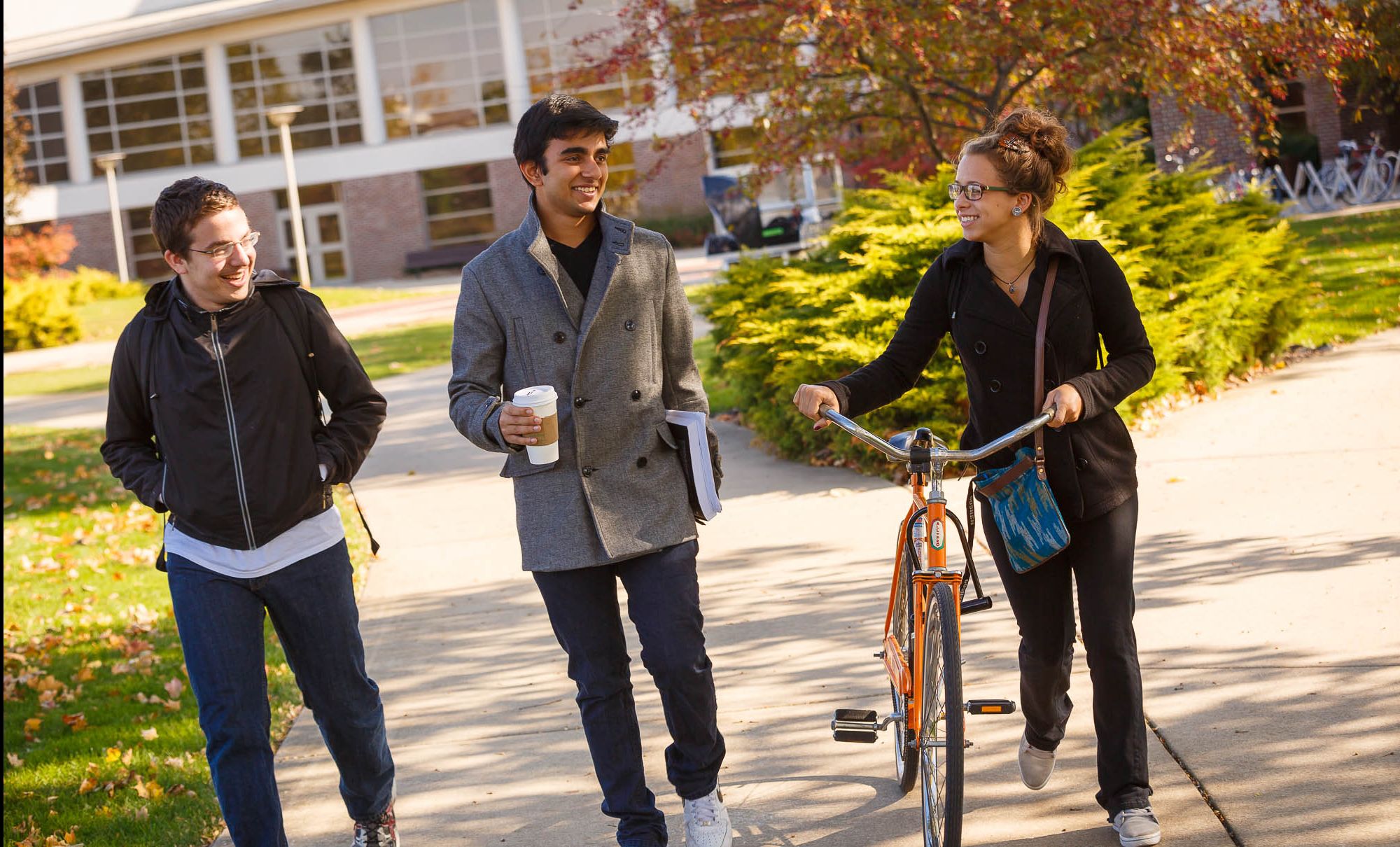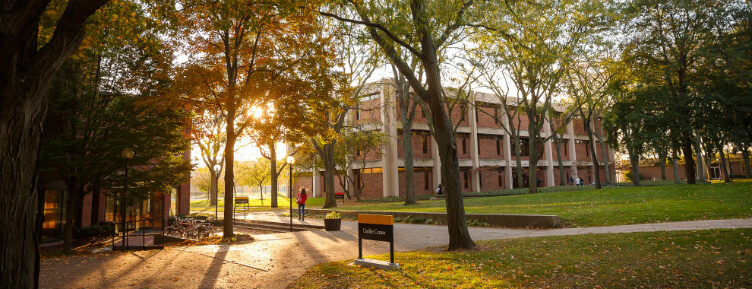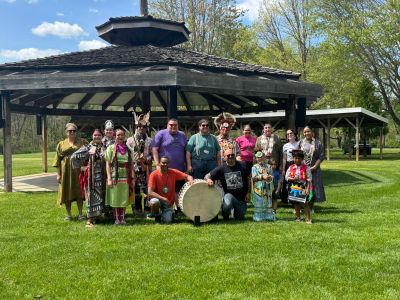By Mafe Aguilar Vargas, graphic design and marketing majors
Beginning on May 7, we spent two days with the Pokagon Band of the Potawatomi and camped one night at their campground. Our first day consisted of hearing about the tribe and experiencing traditional dance and drumming. We were welcomed by our host, Rebecca Williams, the Youth Cultural Specialist, and then introduced to Madalene Bigbear who talked to us about a newer lodge they had built this year, which are also known as wigwams.
These lodges, all made by hand, are where the Potawatomi hold sacred ceremonies where an elder will light a sacred fire and use tobacco to cleanse the space and get it ready for prayer. Madelene also gave us a lot of insight about the tribe’s goals for cultural preservation, for example, expanding their preschool to a K-12 school program. Their overall goal is to help families and children learn and retain tribal members to the Potawatomi roots of culture, language, and spiritual beliefs. We were also taught about the tribe’s government structure and the challenges they are currently facing and the things they are forced to do or not from federal laws.
As an urban indigenous peoples, they have to fulfill their Native responsibilities, and to do this, they host powwows. What we learned about powwows is that they are social gatherings that many Native American tribes share stories using music, different dance styles, traditional regalia, and often compete with other dancers. Madalene was also really kind in showcasing the dancers that each wore a different style of regalia, or special outfit, representing a story. However, there can’t be dancing without music. Music is played from a sacred drum that men usually play and sing with. The feeling of hearing this drum and the singing is something that I cannot describe because the sound is so powerful that you can feel it in the earth beneath your feet.
We also learned about the regalia of the dancers before each dance. Madalene explained to us what each dance meant, its origins and what to watch for. She also explained the Royalty dress worn by the elected youth ambassador of the tribe—with a crown and a shawl at the hand—and the dance that resembles a delicate and slow march. One of my favorite dances was the grass healing dance style, mainly danced by men, which has very fast moves from jumping from one foot to the other. The clothing is very colorful and fully beaded by hand, followed by a wetland grass headpiece and bells at the ankles.
A healing dance includes a dancer wearing the“Jingle Dress,” originally from the Ojibwe people. This dress has coned bells that represent tobacco which is used as healing medicine and consists from jumping from one foot to the other, but in an elegant manner, making the cones bounce on the dress while making bell sounds following the rhythm of the drum. The Potawatomi Northern Style dance is danced by women with hand movements that resemble scrubbing, harvesting and the life ways of the Great Lakes. The regalia also consists of many ribbons in the skirts, headpieces, and scarfs at the hand.
The men’s traditional Great Lakes style is the oldest traditional dance that exists among Indigenous nations across North America. Ribbons and floral designs are a huge representation of the Pottawatomies, so this style of clothing has a lot of those artistic patterns and colors. And, last but not least, another favorite dance of mine was the women’s style fancy dance. This dance was created to show athletic ability of women, so far all the women’s dances have been very slow and delicate, but this one shows a lot more movement while still maintaining that delicate balance. The clothing is much more breathable and light, as the dress is more silky and still has the beaded and ribbon details, and the dancer carries a long shall with ribbons that resemble butterfly movements.
Although all of these dances are so different, the representation of the Potawatomi people is consistent throughout each outfit with the ribbons, floral patterns, and beaded details. Madalene mentioned that powwows are a good way for non-natives to engage with Native culture and artistry by appreciating the storytelling behind each dance and she invited us to their upcoming powwow on Memorial Day weekend. The Pokagon Band gave us the opportunity to dive into their culture, spiritual beliefs, and government system, and I’m honored to have experienced each of these things first-hand to fully understand what they do.

